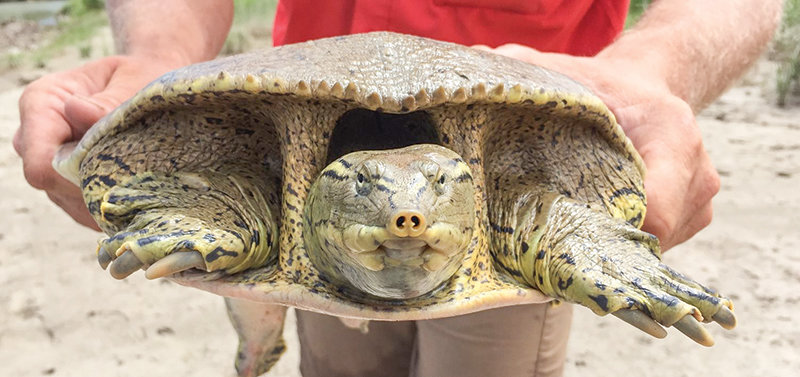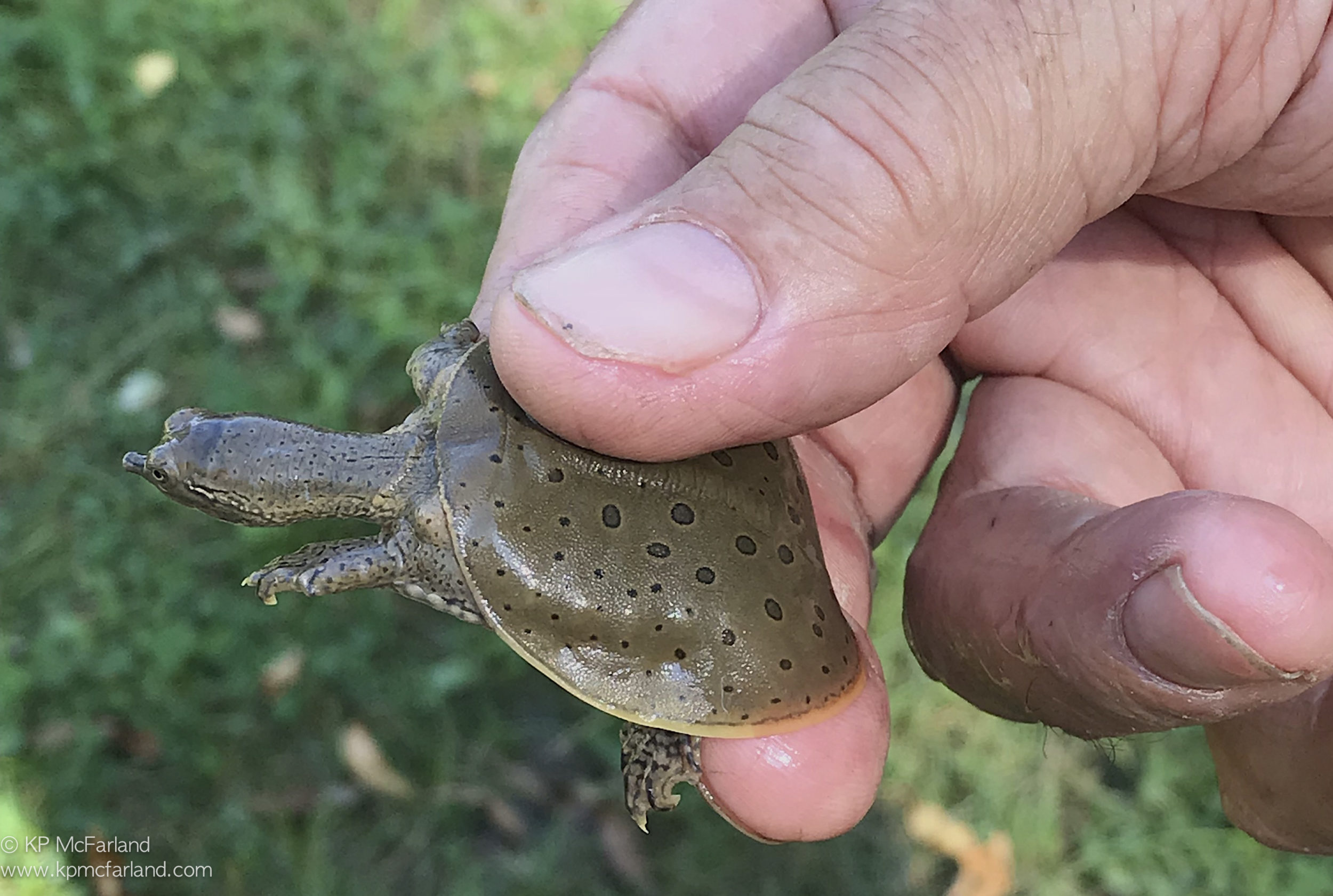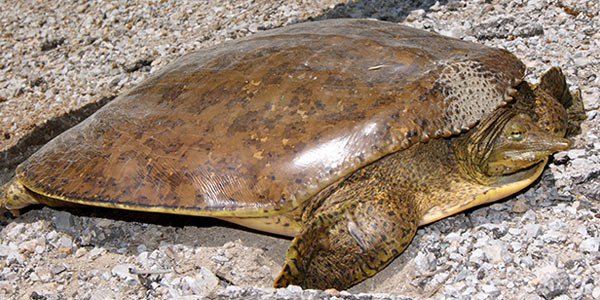Spiny Softshell Turtles, also known as Apalone spinifera, are a fascinating species of turtles known for their unique physical characteristics and behavior. Native to North America, they can be found in various freshwater habitats such as rivers, lakes, and ponds. If you’re considering keeping a Spiny Softshell Turtle as a pet or simply have an interest in these fascinating creatures, understanding their size and growth potential is essential.

Credit: www.powelltribune.com
Size and Growth Potential
Spiny Softshell Turtles are famous for their streamlined and flat shells, which help them maneuver swiftly through the water. When it comes to their size, they can vary significantly based on a number of factors including gender, habitat, diet, and care. Generally, females are larger than males, with some females reaching impressive sizes.
The average size of a male Spiny Softshell Turtle is about 6-8 inches in length. However, females can grow much larger, reaching sizes between 10-18 inches. There have even been rare reports of some females exceeding 20 inches in length. In terms of weight, males typically weigh between 0.5-2 pounds while females can reach weights of 3-10 pounds.
It’s important to note that these sizes are just estimates and individual turtles can vary. Factors such as genetics, environment, and diet can influence their growth. Providing proper care and a suitable habitat will contribute to their healthy growth and potential size.

Credit: vtecostudies.org
Factors Affecting Size
Several factors contribute to the size and growth potential of Spiny Softshell Turtles:
- Gender: As mentioned earlier, females tend to be larger than males.
- Age: Turtles grow continuously throughout their lives, but growth slows down as they get older. Younger turtles will grow faster than adults.
- Diet: A nutritious and varied diet is crucial for proper growth. Providing a balanced diet of insects, fish, aquatic plants, and commercial turtle pellets will ensure they receive the necessary nutrients.
- Habitat: While Spiny Softshell Turtles require water for survival, the size and quality of their habitat can impact their growth. Turtles kept in larger and more naturalistic enclosures tend to have better growth rates than those confined to smaller spaces.
- Genetics: Each turtle has its own genetic potential for growth. Some individuals may naturally grow larger than others.
Turtle Care Tips for Healthy Growth
If you’re considering keeping a Spiny Softshell Turtle as a pet, it’s important to provide the best care possible to ensure their healthy growth. Here are some tips to help you:
- Enclosure: Set up an adequately-sized aquarium or pond that provides enough space for the turtle to swim and bask. The enclosure should have both a water area and a dry area for basking.
- Water Quality: Maintain good water quality by regularly cleaning the tank, providing a water filtration system, and conducting water tests. Spiny Softshell Turtles are sensitive to poor water quality, which can hinder their growth.
- UVB Lighting: Invest in a high-quality UVB light for your turtle’s enclosure. UVB light is essential for their calcium metabolism, which is important for healthy bone and shell growth.
- Feeding: Offer a variety of protein-rich foods such as insects, fish, and commercial turtle pellets. Additionally, include leafy greens and other vegetables in their diet to ensure they receive essential vitamins and minerals.
- Veterinary Care: Regularly visit a reptile-experienced veterinarian for check-ups and to address any health concerns promptly.
Providing proper care, a nutritious diet, and a suitable environment will help your Spiny Softshell Turtle reach their potential size and ensure their overall well-being.
Conclusion
Spiny Softshell Turtles can reach impressive sizes, with some females exceeding 20 inches in length. However, their size can vary based on factors like gender, age, genetics, diet, and habitat. By providing proper care and a suitable environment, you can help these fascinating turtles reach their full potential.






Leave a Reply